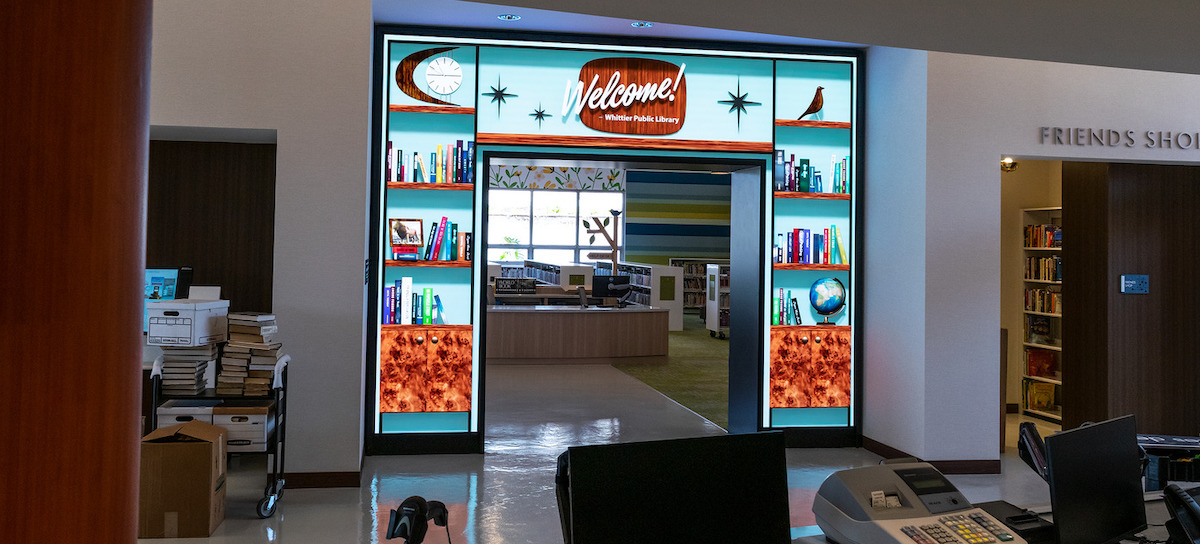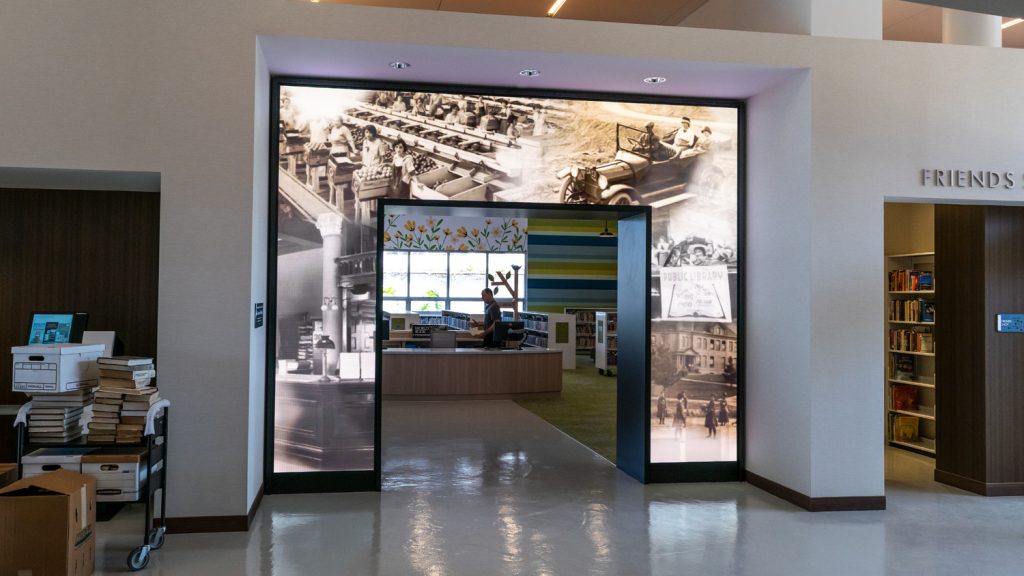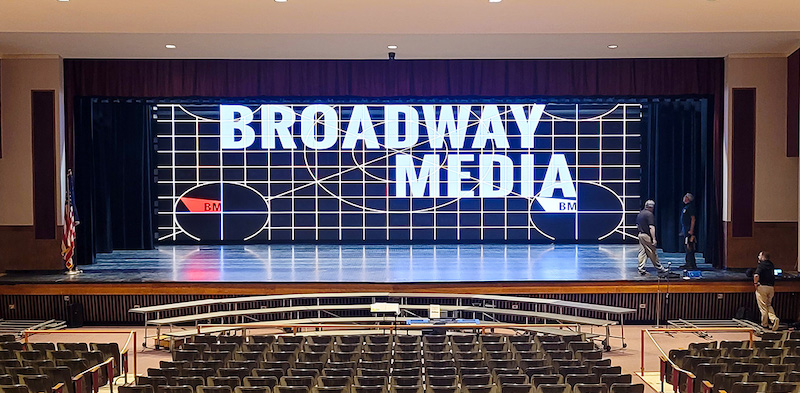
Here Are Two More Jobs Showing How LED Video Walls Are Now Mainstream Tech
June 28, 2022 by Dave Haynes
I have been writing for the last couple of years about how direct view LED is now a mainstream technology that is no longer just going into high-profile, big-budget projects, and a couple of new installations in this morning’s inbox really drive that home.
A multimedia room gateway in a local library, and a giant backdrop in a high school’s theater.
First up, the main branch of the Whittier Public Library in Whittier, California (middle of metro LA) has a 2.5mm digital archway made with two vertical columns joined by a horizontal ribbon across the top. The project uses SNA Displays for the LED and it was pulled together and put in by solutions provider Electrosonic. The arch is positioned as a portal taking people from the main library and into the children’s reading section.
Despite the technical nature of the LED installation, says an Electrosonic press release on the job, a new display is only as good as the content that goes on it. To deliver the Library with high-quality, engaging, and relevant content, Electrosonic turned to Render Impact. Render Impact is no stranger to non-traditional digital displays. Most of their creative content work is for requests outside the usual 16:9 format. Digital ceilings, floors, column wraps, and 90-degree corners (think anamorphic illusions) are all formats Render Impact is used to dealing with. When they received the request to create content for this project, they jumped at the opportunity.
For this project, Render Impact created four separate pieces of content. An underwater scene made in the Unreal Engine, creative incorporation of historic images of the city of Whittier, a 3D mid-century modern bookshelf canvas and finally, a tranquil CG nature scene that highlights the Library’s mascot Leo the Lion.

“The Whittier Library project was an exciting project for several reasons. The non-standard screen format of the LED archway always creates a playful canvas, as seen in the Bookshelves animation. Creating content for both sides of the archway (Public side; Children’s side) gave us a great opportunity to craft imagery for a broader range of audiences. The longer runtime of the 3D-animated underwater scene allowed us to mix in several small moments for patrons to discover,” says Dan Maher, Production Manager at Render Impact.
The second job is an ambitious upgrade to the performing arts center for the Pioneer Central School District in rural Yorkshire, NY, which is about 45 minutes southeast of Buffalo.
The theater now has a 49 foot wide by 18 foot high, 2.4mm fine pitch LED wall that manufacturer Watchfire Signs suggests is the first of its kind outside of the Broadway theater district in New York City. The interesting thing, beyond where it was put in and by who, are the cost, ROI and operational reasons behind the project, as related in a Watchfire press release:




These are fantastic uses of technology. But I challenge the “payback” angle versus physical sets in the performing arts venue. Sets are cheap… this tech is not … AND… maintenance on the tech will be the same, if not more expensive, than any number of “physical sets the district might build. Plus, the tech is designed to last 8-10 years. But they are high on the “cool scale.”